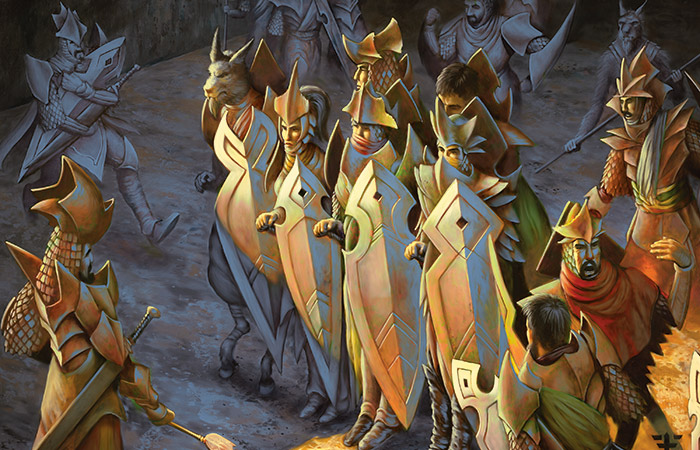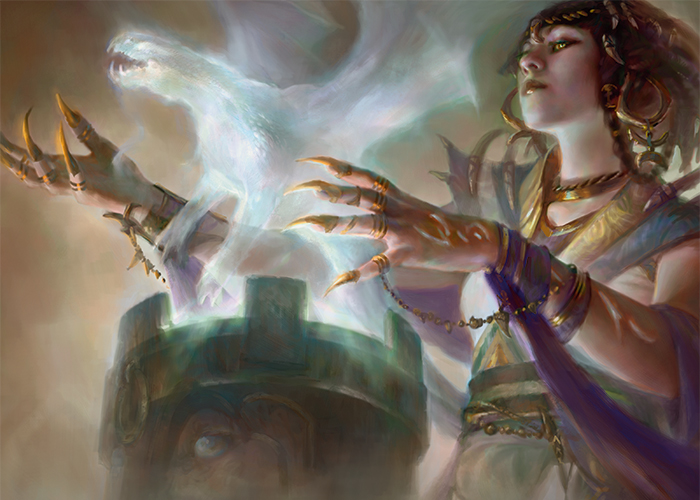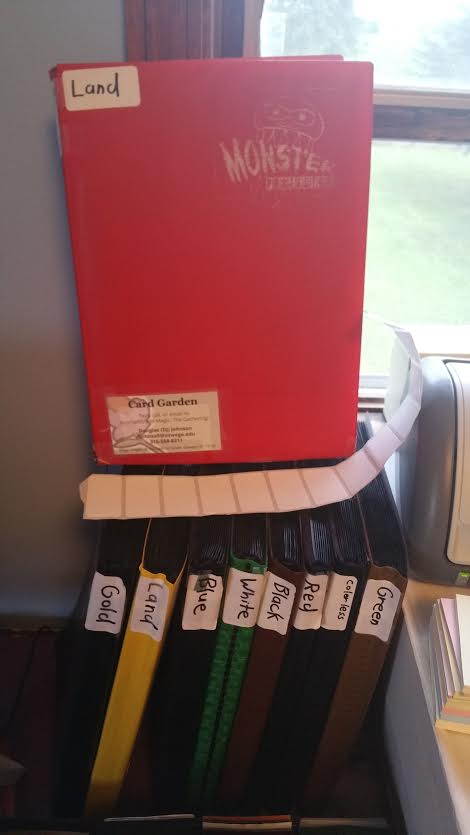Hello, and welcome to “That New Clash Pack Week” here at MTGPrice.com! I’m (partially) kidding, of course, although the finance community is right to be excited. There are very few opportunities for a 100-percent clean arbitrage, and the numbers on this product currently work out in the buyer’s favor.
Potential Commander Bannings
By: Cliff Daigle
There’s no doubt that Commander is one of the prime forces at work when it comes to the prices of a lot of cards. There’s a combination of factors that make Commander a format that can be almost as expensive as Legacy:
- Singletons – I’ve said that this is one of the great lies of EDH; that you only need one of a card. The truth is that if you build multiple Commander decks, you’ll need more of certain cards, especially sweet lands.
- Age of Players – Commander has a powerful effect on older players: it enables the entirety of their collection. To someone with boxes of cards from playing years before, Commander is one of the only ways to play with those cards.
- Eternal – Aside from bannings, the cards don’t change, and you can keep cards in a deck forever.
- Battlecruiser Magic – I’m using Sheldon Menery’s term for this, as it’s accurate: EDH is where you go to cast Time Stretch and copy it twice, or Genesis Wave for X=43, or whatever expensive setup you want!
- Magpies – I’m trying out this term for those of us who collect shiny and unusual things, but don’t necessarily have a way to display the card/use the card. Where else are you going to put that SDCC Garruk, Caller of Beasts?
All of these elements come together and make Commander a format that can be surprisingly expensive. There’s not a lot that causes spikes in Commander prices, at least not all at once. Two years ago, with Nekusar decks becoming quite popular, there were spikes in a lot of cards like Wheel of Fortune (but not Memory Jar?) but that’s the exception.
Excepting, of course, the EDH ban list. Remember, Commander is a format that is not strictly official. The EDH Rules Committee maintains the ban list, and while some members of the committee work at Wizards of the Coast, it’s a small group of guys who make the ‘official’ decision.
Those decisions can cause some large and fast spikes when a card is unbanned (Staff of Domination) as well as some craterings when a card is removed from the format (Griselbrand).
This week, there were no changes to the banned list, meaning we have some time to think about what changes might be in store. It’s worth remembering that they don’t like to preemptively ban cards; they prefer to let players have the new toy for a little while and see how bad it is. Worldfire and Griselbrand come to mind as examples: it was clear they were probably no good for the format, but there was still a couple of months of play.
Let’s start with the current banned list and see what’s a candidate to be let out of the doghouse. I’m not going to go over every card, just the ones with a shot.
Coming
Biorhythm – Hear me out. It’s an eight-mana spell that carries a lot of risk to the caster. If you’re not casting it to kill someone, it’s a dead card. Plus, it puts your life total into a possibly dangerous spot too. Insurrection and other such spells also can end the game at eight mana, so I think this gets revisited eventually. Picking up a dozen sub-$2 foils and just putting them away seems like a safe bet, one which could pay off dramatically.
Unbanning potential: 4/10
Gifts Ungiven – There are a lot of comparisons out there for this card, from Intuition to Buried Alive or Fabricate, but being able to search up Mindslaver, Buried Ruin, Academy Ruins, and Crucible of Worlds and guarantee that you control every turn for the rest of the game…no thanks. I think it gets looked at and laughed away.
Unbanning potential: 2/10
Sway of the Stars – It’s ten mana to start the game all over again at seven life. Only suspended spells will get around this (I’m looking at you, Jhoira of the Ghitu) and it’s just rather annoying. I think Sway does eventually get off the list, and as another card with foils at below $2, there’s a lot of potential.
Unbanning potential: 7/10
Time Walk – This is a surprising card to see banned, as Time Warp, Time Stretch, etc. are all allowed. Timetwister is not banned either, so I think Time Walk gets its day as well. Considering the price, though, I don’t think there’s a big profit potential here besides the growth of Power.
Unbanning potential: 7/10
Now, let’s talk about some of the cards that folks want to have banned and how the price would be affected.
Going
Sorin Markov/Magister Sphinx – These are cards that set your life to ten, undoing the starting life buffer and undoing any lifegain you’ve worked on. This is an enormously powerful effect, and each has the potential to be used more than once. Sorin, having been printed twice but not for five years, has much farther to fall. The Sphinx, even in foil, is already rather cheap.
Banning potential: 6/10
Seedborn Muse/Murkfiend Liege/Prophet of Kruphix – All three of these untap some or all of your permanents on each other player’s turn, effectively giving you extra turns. Prophet even lets you play creatures, while the other two are progressively more narrow. These are cards that are more than just powerful, they are time-consuming and grant enormous benefits, requiring instant-speed answers at the end of the turn on which they are played. I would not be surprised if Seedborn and Prophet got hit first. Murkfiend might be allowed, since it’s only specific colors of creatures, but the other two are targets.
Seedborn would take the biggest hit, likely falling from $13 to $5 or so, and the foils would take a real hit. I wouldn’t be trying to hold any of the three foils for long-term investments. Prophet has a Clash Pack foil promo weighing down its price but the real loss would be in the future value. Murkfiend would also go down by more than half.
Seedborn & Prophet banning potential: 9/10
Murkfiend banning potential: 4/10
Deadeye Navigator – Another card that requires instant-speed removal and perfect timing. You want to respond to the Soulbond trigger to remove whatever they are flickering. This is a card that is exceedingly easy to abuse, yet it doesn’t have much of a price at all. Banning this would take it from dollar rare to bulk rare. The foil would take a huge beating, likely falling from $10 to under $2.
Banning potential: 8/10
Consecrated Sphinx – I was surprised that this wasn’t in Modern Masters 2015, and I’m surprised that it hasn’t been banned yet. Just like Primeval Titan was easy to steal, copy, and abuse, this is utterly ridiculous. Copying it means that two players get to draw an arbitrary number of cards, which is what got Trade Secrets banned. It’s at $15/$45 now, and if it gets removed from EDH I think it would settle at around a third of its former price.
Banning potential: 8/10
Mana Crypt – Now it’s true that this card is both amazingly expensive and generates fast mana, two characteristics that the Rules Committee frowns upon. Eventually, this will get banned for the combination, though it’s hilarious to see someone take 12 damage over the first five turns from this. It’s got Eternal formats buoying the price, though, so banning in Commander will only make a small dent in the prices.
Banning potential: 7/10
Tooth and Nail – Even at the high mana cost of this entwined, it’s rather degenerate. It’s not that much worse than Green Sun’s Zenith or Chord of Calling or other such cards, but I’m just tired of the same combos popping up. Name your combo, and it’s been done a bunch.
Banning potential: 6/10
If I left off your personal boogeyman when it comes to cards that need to be banned, feel free to mention it in the comments.
PROTRADER: Standard Pickups as Magic Origins Hits
I’ve spent a lot of time talking about Modern in this column recently. And it does make sense, after all. Modern is the new Legacy. Modern is the place with all the news happening. Modern is the place with the price spikes (did you catch the Living End spike? That one seems random). Modern is the place with high-profile events, and Modern is the place with the exciting innovation.
That could be changing soon.
The rest of this content is only visible to ProTrader members.
To learn how ProTrader can benefit YOU, click here to watch our short video.
Growing Pains
Some of you might remember this article, where I discussed how I got to where I am now as a small-time buyer and seller of Magic cards. One of the biggest points I wanted to emphasize in that article was how flexible I am with what’s on my buylist and how willing I am to buy pretty much anything if the price is right. While I’m definitely not always paying the highest prices in my local area, my trump card has been availability and versatility. From duals to bulk, I’ll take it all.
One of the clear results of this “buy everything that taps” theory is how I ended up accumulating a reasonably sized collection over time, both in bulk and more relevant staples. The days of “bring your trade binder to FNM” have been over for a while with me: the sheer volume of cards that I would have to lug around means it’s just not worth it. I don’t enjoy dragging my luggage case into local stores anyway, so I have to play a process of elimination game as to what gets left behind whenever I make a trip to vend a local EDH event, meet up at a halfway point for a Craigslist sale, or decide what’s getting unloaded to the vendors at the next Grand Prix.
Because I enjoy being able to find specific requested cards at a moment’s notice, I’m always trying to figure out new ways to optimize how my collection is organized. I want it to be easy for me to find things, easy for my customers to find things, and simple to buylist when I occasionally force myself to sit down and do that. (I hate online buylisting.) If you’ve been reading my content for a while now, the following article might seem a bit familiar. However, hopefully there’s a big enough difference in my setup now as opposed to nine months ago, and maybe my writing will even have improved a bit.
Unfortunately, I can’t stay at college over the summer without spending unnecessary money and taking unnecessary classes. This means that once summer break comes, I pack up everything and move back into my father’s house to spend two months sorting, selling, buying, and binging on League of Legends. On the plus side, I don’t have to worry about going to class or having a social life during these months, because I’m out in the middle of nowhere. This means I’ve been able to focus entirely on grinding those dollars, and writing about the process.
The Big Picture
Unfortunately, those 5,000-count boxes you see in the far right corner are not filled with cards. Those are all empty boxes that I’ve just accumulated from buying collections, and I use them for when I unload mass amounts of common/uncommons or bulk rares to vendors. Everything else is full of Magic: The Gathering trading cards, and this week we’ll go through what goes where, how I use different selling strategies to move differently valued boxes, and where I get some of my supplies.
We’ll start off with the more relevant stuff, or at least what most competitive players consider to be relevant. I try to keep my binders clean of any lower-value stuff and move cards that are worth less than $4 to other separate long boxes. Personally, I have a binder for each color, although if you’re a Standard or Modern grinder who wants to have a gauntlet of everything, I might recommend using a binder for each block.
It might also help to have your binder colors match the respective material inside them. It’s too late for me now, but there’s still time for you to save yourself from the confusion.
“Where are your Garruks, DJ?”
“In the ‘green’ binder.”
“This one? It has a bunch of white cards in it.”
Anyway, I also suggest picking up some type of labeling system for every single box, binder, or whatever item you use to carry cards around. I used a crude method of business cards and price stickers, but a Sharpie works just as well. Labeling your cards (well, not the actual cards) with your personal information gives you a shot at having them returned if you misplace them, and stickering the contents of the binder helps EDH players save time so that they know not to open up the binder labeled “Standard Staples” before the trade starts.
Sleeve Marking
One of the biggest obstacles I used to run into while trying to keep my collection organized as a single entity was maintaining a divide between the inventory that was listed on my TCGplayer store and the stuff that wasn’t in my online inventory. I had to keep the TCG cards separate, because I needed to remember to scribble down a note whenever I sold or traded one of them away through an outlet that wasn’t TCG. That way I could remove it as soon as I got the chance. The downside to this used to mean keeping an entire separate binder or two labeled as “TCGplayer” and then sorted by color itself. If someone asked about my Avacyns, I had to keep track of whether or not they were in the TCGplayer binder white section or the non-TCG white binder.

As you can see in the picture above, I eventually had a (painfully obvious) idea that I should have come up with a long time ago. As a fairly strict grader, I mark the condition of every card that comes into my personal inventory before I sleeve it by using a trusty, fast-drying Sharpie. The condition is written on the sleeve to help quicken the listing or trading process further. I also note any language differences with short abbreviations to highlight the difference to any potential buyers. If you have miscut, misprinted, or foreign cards that you’re trying to move out of your binders, it’s a great way to make them stand out a little bit more.
To fix the “separate inventory” problem, I started writing “TCG” on the sleeve of any card that was currently listed on my online store. While a certain number of you probably already do this or consider it so obvious that I should have been doing it all along, the idea just never really clicked until recently.
I’ve had this card house ever since my casual Yu-Gi-Oh! days, and I think it’s a great investment for anyone with a large enough collection to fill up at least ten of the 1,000-count boxes. The house itself will run you about $10 to $15 depending on where you look, with Troll and Toad being one of the cheapest I can find. Be careful ordering from them, though—they’ll probably try to fit it into a single envelope and forget the top loader.
Sorting the $1, $2, and $3 cards by price and alphabetically means that it’s still easy to find a specific card in a short period of time, while still allowing you to watch casual players pull out big, splashy mythics with prices that blow their minds. “Kresh, the Bloodbraided is only $2?!”
Most competitive players don’t really bother looking through those boxes of cheaper cards, but they’re easily sorted and accessible for me to pull out their playsets of Electrolyze and Manamorphose.
Another benefit to having all of the cheaper cards laid out in a box like this is that it’s much easier to buylist out of at a Grand Prix. You take your box of $2 cards from vendor to vendor and ask them to pull out anything that they’ll pay $1 on, or whatever number you want to go with. I’d much rather bring my $1 box to the next Grand Prix and have a vendor pull out Utter Ends for $.25 to $.50 each instead of having them sit in that box until they rotate.
I usually don’t bring the bulk foil common/uncommon boxes or the bulk foil rares unless someone specifically asks me in advance to drag them along. Most vendors don’t care about bulk foils if you’re at a large event, but sometimes you can find a local guy who’s trying to foil out a common cube. Hell, if you have enough bulk foils, build your own foil cube!
Relevant Commons/Uncommons
Most of my articles mention picking through bulk common/uncommons at some point. It’s one of the most consistent returns that I have in this business, and I’ll forever advocate buying bulk commons/uncommons until I can make an actual house out of them.
This is where all of those “picks” that I’m always ranting about end up. All of the Nettle Sentinels (before they got upgraded to the $3 box), all of the Glistener Elves (which will eventually go in the $3 box, and I highly advise buying into this now instead of looking for the Moby Dick of Origins finance), and all of the Vampire Nighthawks end up here. The fact that there are six boxes there is a sign of my laziness and unwillingness to sit down and buylist a bunch of it, but I absolutely love these storage case boxes. They hold a little over a thousand cards each, and are relatively compact enough to fit a couple into a backpack. Whatever you do, don’t buy them from Amazon on that link I just gave you. I got all of mine through a combination of gifts and Wal-Mart, where they were $5 a piece.
End Step
Lord of the Void is a $3 Magic card.
…
…
…
Seriously, though, $3?
Anyway, let me know if this was interesting or helpful. I’ve received positive feedback in the past about explaining and snapping pictures of my own personal organization process, so hopefully this had something useful for someone. Let me know in the comments if there’s anything specific you’d like me to cover in the future!








